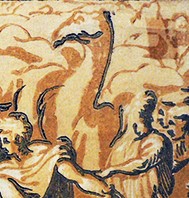 Giuseppe Niccolò Rossigliani, called Niccolò Vicentino (active about 1510–1550) after a drawing by Parmigianino (Girolamo Francesco Maria Mazzola, 1503–1540), The Adoration of the Magi, [between 1540 and 1560]. Chiaroscuro woodcut from three blocks. Bartsch XII.029.2, ii/ii. Graphic Arts Collection GC094
Giuseppe Niccolò Rossigliani, called Niccolò Vicentino (active about 1510–1550) after a drawing by Parmigianino (Girolamo Francesco Maria Mazzola, 1503–1540), The Adoration of the Magi, [between 1540 and 1560]. Chiaroscuro woodcut from three blocks. Bartsch XII.029.2, ii/ii. Graphic Arts Collection GC094
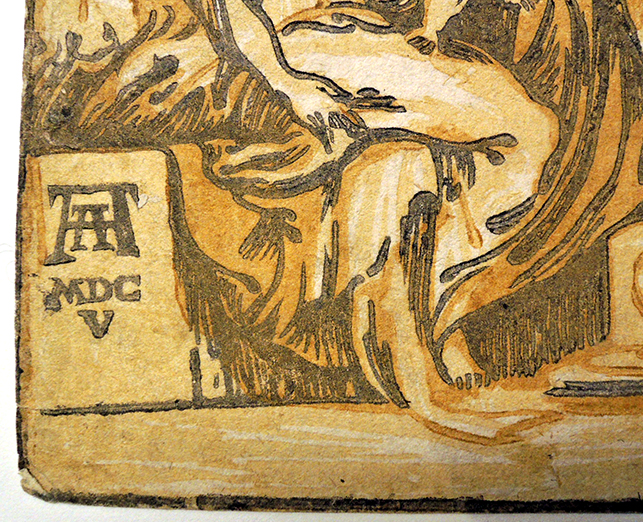 This is the final state of Vicentino’s print, with the publisher Andrea Andreani’s monogram AA MDCv. Although Andreani was also an artist, he did not carve or print this woodcut. The first state has the letters FP for “Franciscus Parmensis” in the same position.
This is the final state of Vicentino’s print, with the publisher Andrea Andreani’s monogram AA MDCv. Although Andreani was also an artist, he did not carve or print this woodcut. The first state has the letters FP for “Franciscus Parmensis” in the same position.
The print reproduces a drawing in the Louvre by Parmigianion:
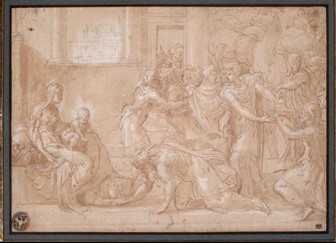
Parmigianino (1503-1540), L’Adoration des mages, no date. Pen and ink, brush drawing. Musée du Louvre INV 6377
One of the nicest aspects of the chiaroscuro print is the simplicity of the camel, drawn in tone with the animal’s long neck accented in a single black line. Many artists included camels in their Adoration scenes but often used a horse as the model with limited success in its appearance.
http://www.larsdatter.com/camels.htm offers a wonderful set of links to various camels throughout the medieval and renaissance periods. A few have been included below.
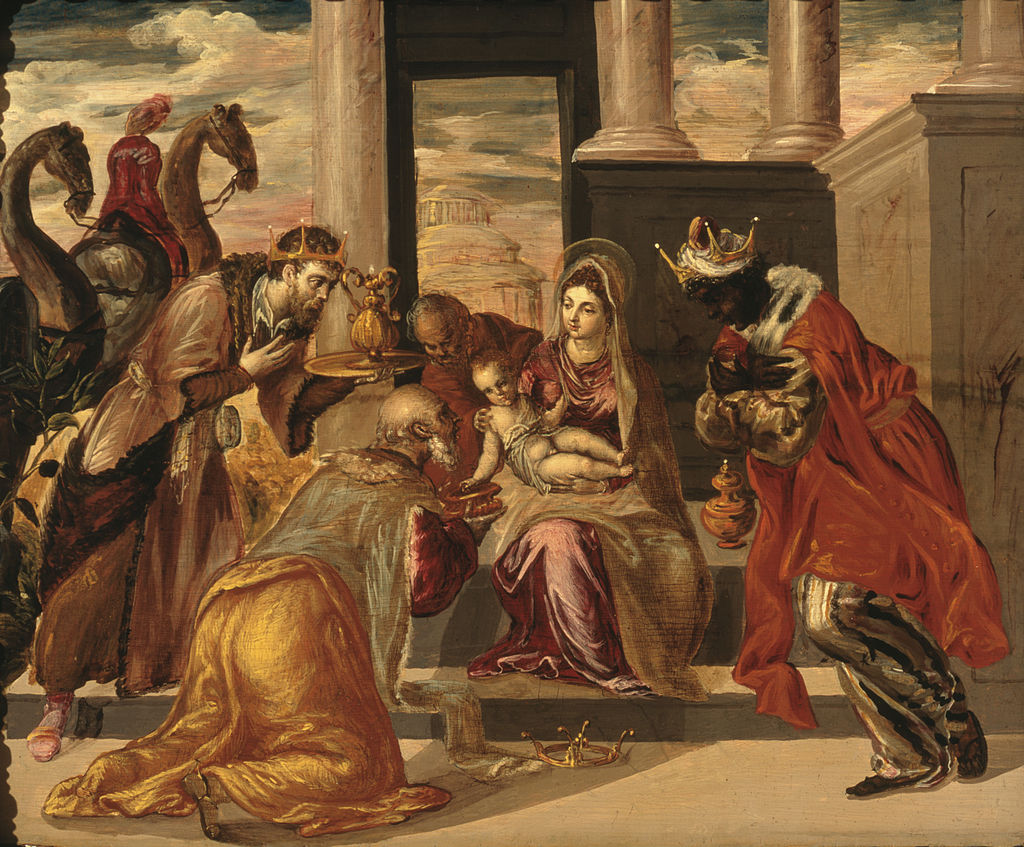 El Greco (1541–1614), Adoración de los Reyes Magos known in English as Adoration of the Magi with Camels, between 1568 and 1569. Oil on panel. Museo Soumaya at Plaza Carso
El Greco (1541–1614), Adoración de los Reyes Magos known in English as Adoration of the Magi with Camels, between 1568 and 1569. Oil on panel. Museo Soumaya at Plaza Carso
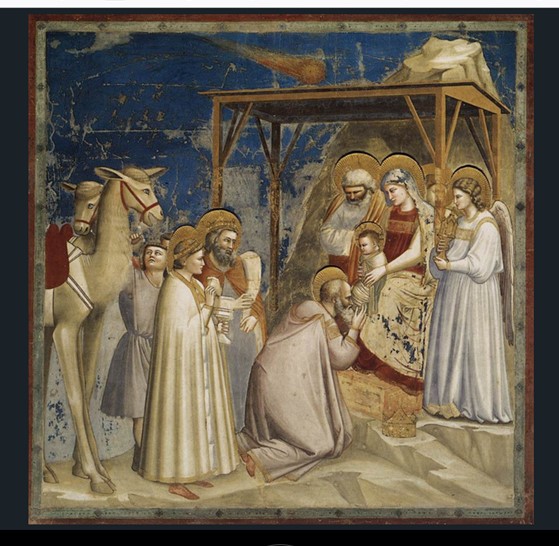 Giotto (active 1295-1337), Adorazione dei Magi, ca.1304-1306. Portion of frescoe in the Arena Chapel, Padua, Italy.
Giotto (active 1295-1337), Adorazione dei Magi, ca.1304-1306. Portion of frescoe in the Arena Chapel, Padua, Italy.
One of the most charming of all the camels can be found at the Morgan Library, in a Persian manuscript:
 Ibn Bakhtīshū (died 1058), Camel. Manāfi˓-i ḥayavān (The Benefits of Animals), in Persian, for Shams al-Dīn Ibn Ẓiyā˒ al-Dīn al-Zūshkī, between 1297 and 1300. Morgan Museum and Library MS M.500, fol. 16v
Ibn Bakhtīshū (died 1058), Camel. Manāfi˓-i ḥayavān (The Benefits of Animals), in Persian, for Shams al-Dīn Ibn Ẓiyā˒ al-Dīn al-Zūshkī, between 1297 and 1300. Morgan Museum and Library MS M.500, fol. 16v
 Larry Rivers (1923-2002), Beyond Camel, 1980. Acrylic on canvas. Privately owned.
Larry Rivers (1923-2002), Beyond Camel, 1980. Acrylic on canvas. Privately owned.

